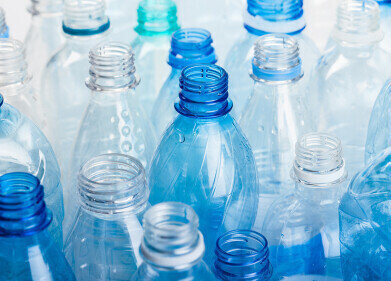Waste Management
What Diseases Are Caused by Microplastics?
Feb 07 2022
These days, microplastic pollution is all around us. From the water we drink to the air we breathe to the food we consume, traces of microplastics can be found virtually everywhere. This pervasive pollution has even infiltrated the furthest reaches of the natural world, from the top of the planet’s tallest peak, Mt Everest, to the depths of its deepest underwater chasm, the Mariana Trench.
As well as degrading the water, soil and air around us, microplastics are also small enough to be consumed or inhaled and absorbed into the human bloodstream. While our knowledge of this phenomenon and its after-effects is still in its infancy, the latest and most sophisticated techniques in microplastics research can help to provide more information about the risks at play.
Cell damage
Although multiple studies have been conducted on the effect of microplastics on animals, very few have shed definitive light on how they impact the human body. However, collaborative research conducted earlier this year by the University of Hull and the Hull York Medical School revealed that human cells can in fact suffer damage from exposure to microplastics.
The findings of the study were arrived at by testing human tissue in a laboratory setting, using microplastic concentrations consistent with those found in real life. While the news is certainly concerning, it is possible that the human body excretes microplastics quickly enough that the damage does not have time to take place. Further research into this area of study is ongoing.
IBD
Another recent piece of scientific research found a potential link between high concentrations of microplastics in the faeces of test subjects and the prevalence of inflammatory bowel disease (IBD). The study found that people suffering from IBD have, on average, exactly 50% more microplastic in their stool than those who do not suffer from the disease, suggesting a correlation between the two.
However, the scientists behind the work were quick to highlight that further investigations are required, since it could be that contracting IBD simply makes the intestines more effective at retaining microplastics, rather than microplastics causing the contraction of IBD in the first place. More serious cases of IBD can degenerate into Crohn’s disease or ulcerative colitis, meaning it can have very significant consequences indeed.
Pathogen conduits?
As well as potentially exacerbating IBD, it’s feared that microplastics might serve as a conduit for a wide variety of other pathogens and toxins, too. That’s because it has been demonstrated that human pathogens are far more adept at binding to artificial substances like plastic than they are to natural surfaces. This makes them more likely to carry diseases and ailments with them when inhaled or ingested.
For example, a 2016 study concluded that the pathogen Vibrio cholera had attached itself to a substantial amount of microplastic samples taken from the Baltic and North Seas. The pathogen is responsible for triggering cholera in humans, which has been stamped out in the UK but remains a grave threat to health in many other parts of the world.
Events
Apr 24 2024 Sao Paulo, Brasil
May 05 2024 Seville, Spain
May 13 2024 Munich, Germany
May 23 2024 Beijing, China
May 23 2024 Beijing, China













